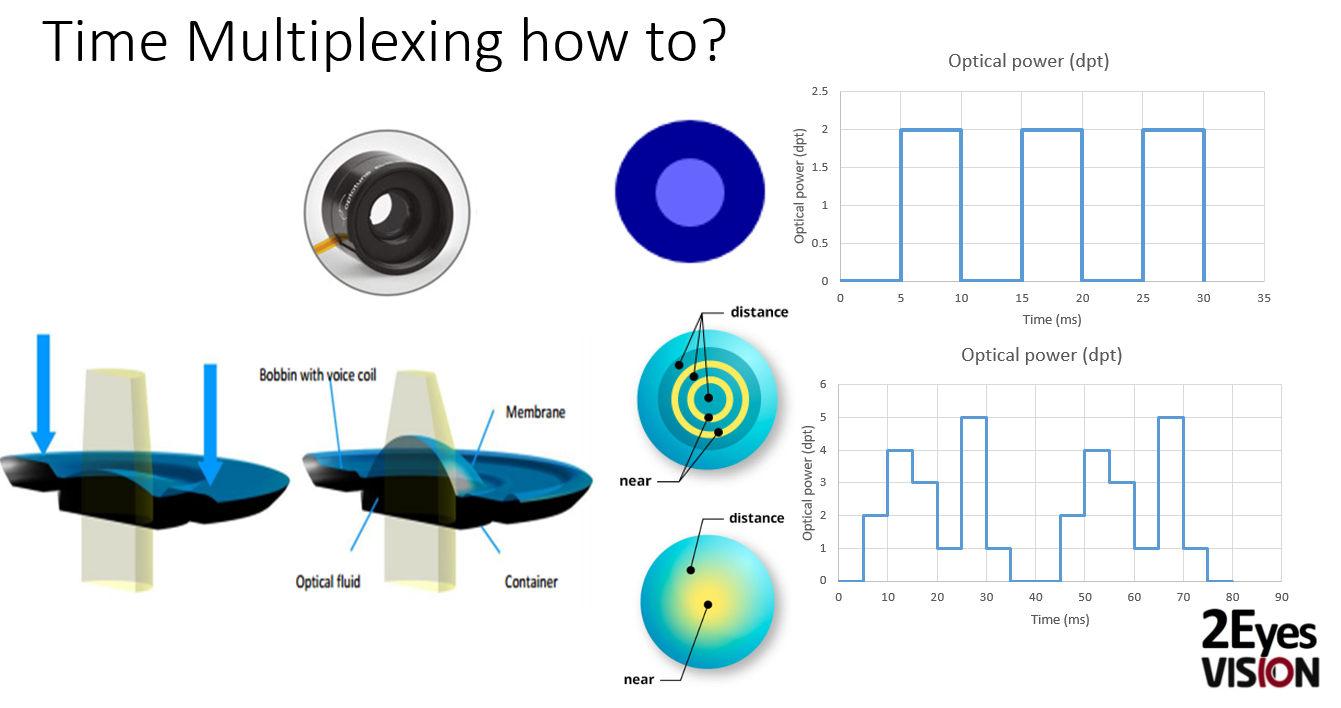Development of Electronics and Firmware for a Visual simulation Device

| AUTHORS / CAREER / CENTER | Yassine Marrackchi/ Biomedical Engineering / Universidad Carlos III de Madrid |
| SUPERVISOR | Eduardo Lage, PhD, Universidad Autonoma de Madrid |
| TYPE | Bachelor Thesis |
| ABSTRACT | Late presbyopia and cataracts are the most common age-related problems that affect human vision. Although they are two different conditions, they share a common denominator: the crystalline lens. In the case of presbyopia, the accommodation ability is gradually lost deteriorating near vision, in the case of cataracts, the perfect transparency of the lens is lost producing a blurred vision. The current clinical solution for both issues consists of a very common surgical procedure in which the natural crystalline lens is replaced by an artificial intraocular lens (IOL). Concerning cataracts, classical monofocal lenses improve considerably the situation at the expense of using reading spectacles. However, both in cataracts and presbyopia this is only a partial solution since it does not correct for the loss of accommodation. During the last years, new IOLs have been developed among which stand out the multifocal simultaneous vision corrections. These are specially designed lenses that have multiple foci allowing to see correctly far and near objects. However, this kind of lenses are not well tolerated by all the patients due to multifocal distortions in the final image. Nowadays, there is no accurate or even objective way to test patient perception with advanced IOLS before the surgical procedure, and therefore although these lenses have high potential, their spread is limited. To solve this unmet clinical need, the CSIC spin-off company 2Eyes Vision is developing a simultaneous vision simulator named SimVis that gives the possibility to the patients to experience, for the first time, multifocal or any other type of intraocular lenses before surgical implantation. The device is based on new electrically tunable lenses and the use of temporal multiplexing to mimic real multifocal designs. This project describes the design of a new version of the hardware of the SimVis which is intended to 1) increase the flexibility of the device in terms of kinds of lenses that can be simulated and 2) to enable the system to be controlled by a remote device using a wireless protocol. In order to make this system functional, the electronic design has been done, a communication protocol has been defined and the firmware controlling the device has been implemented. To evaluate the performance of the resulting system a set of tests and measurements have been performed. Results are consistent with expectations showing great reliability in terms of flexibility of the system and the relationship between the test signals applied and the optical power produced by the adjustable lens system. Finally, the dynamic response of the system was measured, validating in this way the complete prototype design thus determining the possibilities of the current system and possible directions in future developments. Key words: Presbyopia, Cataracts, accommodation, simultaneous vision, tunable lenses, |
| LINK | Confidential content |



